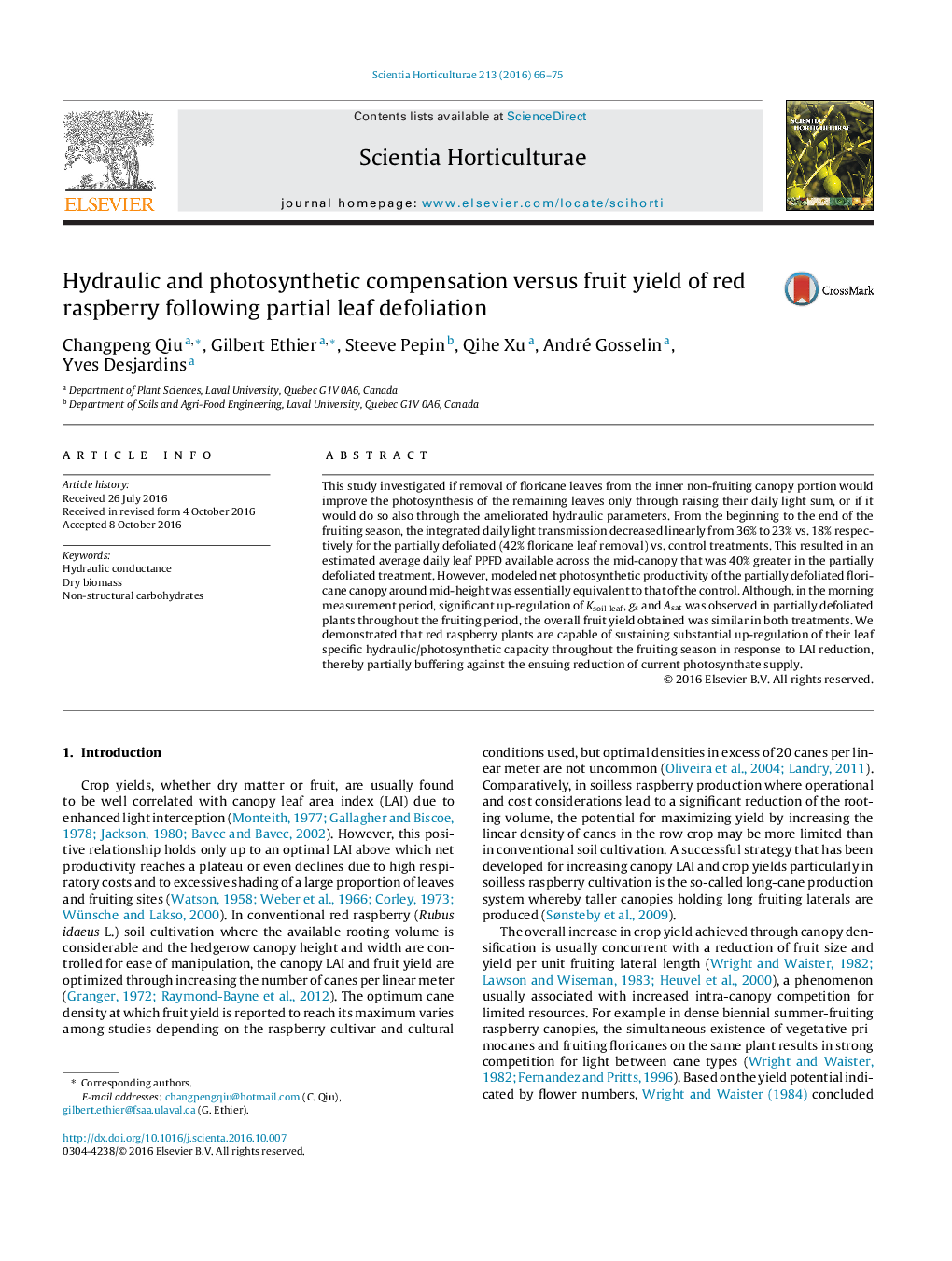| Article ID | Journal | Published Year | Pages | File Type |
|---|---|---|---|---|
| 4565885 | Scientia Horticulturae | 2016 | 10 Pages |
•Leaf hydraulic/photosynthetic capacity of raspberry plants was up-regulated after partial defoliation (PD).•Partial defoliation had no impact on current year fruit yield.•Average daily leaf PPFD was higher in mid-canopy of the PD treatment compared to control.•Daily cumulative photosynthesis of PD plants was equivalent to that of control plants.•Photosynthetic compensation of PD plants is largely under hydraulic control.
This study investigated if removal of floricane leaves from the inner non-fruiting canopy portion would improve the photosynthesis of the remaining leaves only through raising their daily light sum, or if it would do so also through the ameliorated hydraulic parameters. From the beginning to the end of the fruiting season, the integrated daily light transmission decreased linearly from 36% to 23% vs. 18% respectively for the partially defoliated (42% floricane leaf removal) vs. control treatments. This resulted in an estimated average daily leaf PPFD available across the mid-canopy that was 40% greater in the partially defoliated treatment. However, modeled net photosynthetic productivity of the partially defoliated floricane canopy around mid-height was essentially equivalent to that of the control. Although, in the morning measurement period, significant up-regulation of Ksoil-leaf, gs and Asat was observed in partially defoliated plants throughout the fruiting period, the overall fruit yield obtained was similar in both treatments. We demonstrated that red raspberry plants are capable of sustaining substantial up-regulation of their leaf specific hydraulic/photosynthetic capacity throughout the fruiting season in response to LAI reduction, thereby partially buffering against the ensuing reduction of current photosynthate supply.
